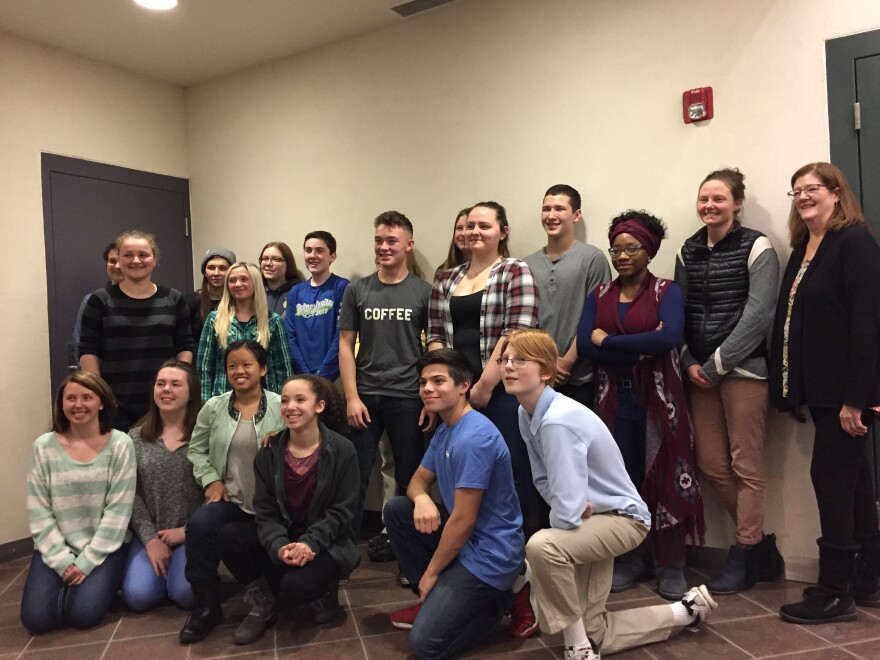When a young person commits a minor offense for the first time, like vandalism or petty theft, they sometimes have a choice. They can either be charged by the standard juvenile justice system and potentially get an offense on their criminal records, or they can go to youth court. There are nine different youth court programs around the state.In many Alaska youth courts, teens serve as defense attorneys, prosecutors, and judges.Palmer High School freshman Grant Wood, who is part of the Mat-Su program, said the idea is simple. Give "good people who have done bad things a second chance. A chance to do some community work service hours and learn what they did is wrong but still be a successful person.”During the closed, confidential hearings, teen prosecutors, like Wood, lay out the facts of the defendant’s crimes, just like in adult courts. Wood said he has wanted to be a prosecutor since he was 12.“I believe it to be part of the prosecutor’s role to keep the community safe," he said.Then come the defense attorneys, who explain that the offender shouldn’t be judged just by one action.“The defense side is more about showing the judges who the defendant is outside of the incident that has taken place," explained former youth attorney-turned-judge Janée Wilson. "They are not just a shoplifting case. They are somebody who has a family and maybe they have struggled or maybe they’re stressed out or they’re just a normal person who has hobbies, just like everyone else in that courtroom.”In Mat-Su, three judges discuss and make a ruling. The sentence often includes community service, writing an apology letter, or writing an essay about the effects of their actions. The idea is restorative justice – don’t ostracize and punish someone for a crime. Instead, work to reintegrate them into the community and help all parties heal.
Because oftentimes the alternative is the Mat-Su Youth Facility.Sean Tynan with the Department of Juvenile Justice led the youth court volunteers through the building, starting in the booking area.“We’ll take the handcuffs off them, do a little pat search," explained.Then he showed them the tiny cells where the young people are housed.“It’s really hard to grasp my head around this. How they live like this every single day," said Wasilla High School senior Kylee Herrell, after the tour. She is one of the presiding judges at Mat-Su Youth Court, and it was her first time at a youth detention facility.“It seems like it’s very cold because everything is steel and metal and, like, their little stool is just all metal that they get to sit on," she said. "And their toilet is not very great. They get sheets and stuff, but their mattress is all plastic and their pillow is plastic and it’s not very nice.”Other youth said that the staff at the facility seemed warm and they were happy to see the school, but they wished the detention center offered more opportunities for the youth.As a presiding judge, Herrell tries to help young people realize the effects of their actions before they end up at a youth facility, but it’s unclear how well youth courts actually do that nationwide. Though the programs are prolific – there are more than 1,000- studies evaluating them have shown inconclusive results, in part because models and sentences vary from program to program. Some programs reduce recidivism. Others don’t. Some defendants end up serving on the court, others feel shamed by the process.
A study done by the Urban Institute in 2002 on the Anchorage program did demonstrate a reduction in recidivism. The researchers say one reason may be that young people play all of the roles in the Anchorage program. Some youth courts have adults deciding sentences.Teen attorney-turned-judge Wilson from the all-youth Mat-Su court said they offer positive peer support to the defendants.“My job isn’t to be the aggressor and to throw what you did back in your face," she said she tells defendants. "I’m a teenager just like you and that could have been me in that seat. And we just don’t want to see you in the courtroom again because we want you to do good things with your life.”Wilson said serving on the court has helped her understand her peers better. They face challenges she may never understand, but youth court gives them the chance to approach those challenges differently.Want to hear more Solutions Desk stories? Subscribe to the podcast on iTunes, Stitcher, Google Play, or NPR.We'd also like your input on future stories. Join the conversation around aging in Alaska by calling 907-885-6055 and leaving a voicemail.




